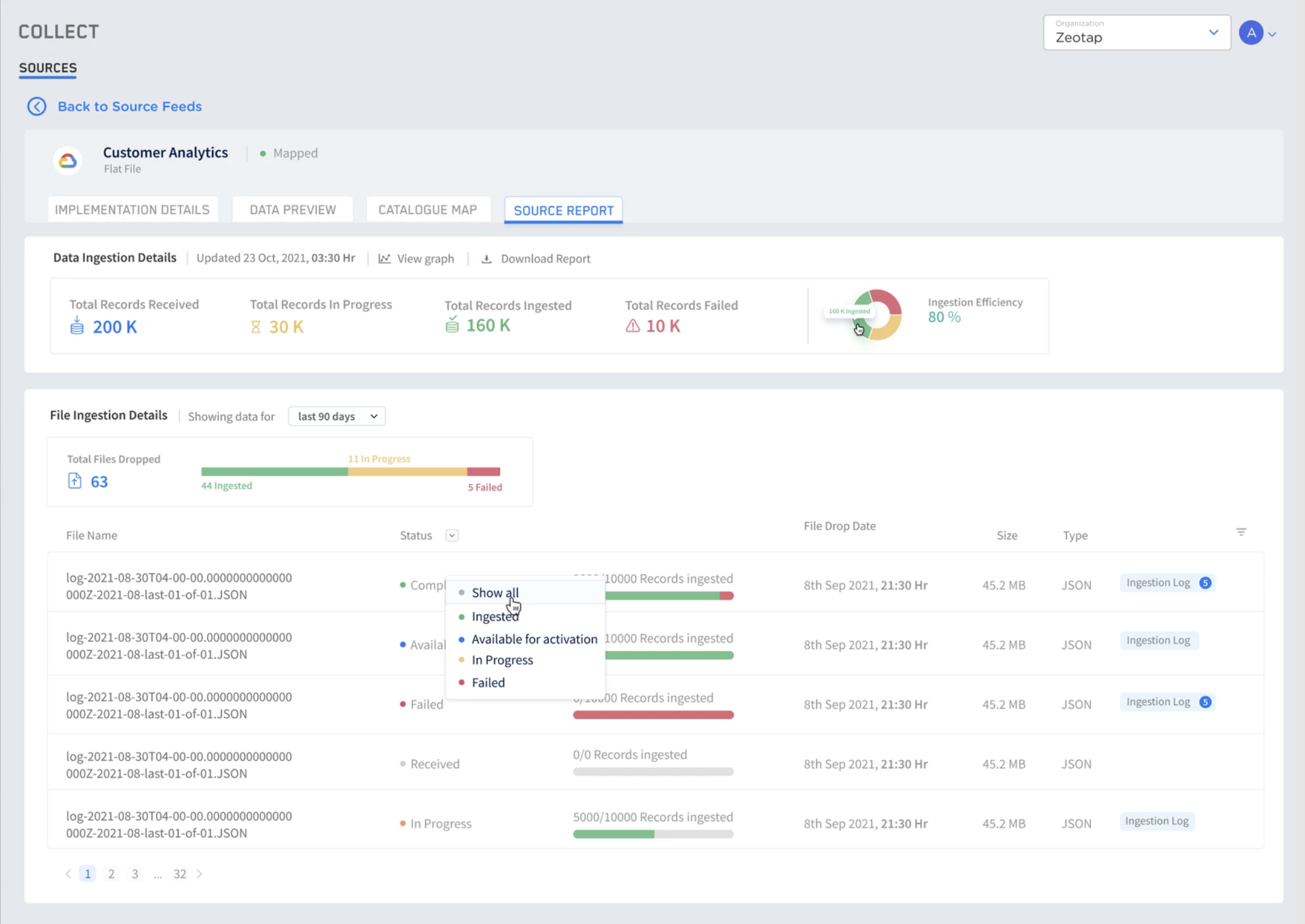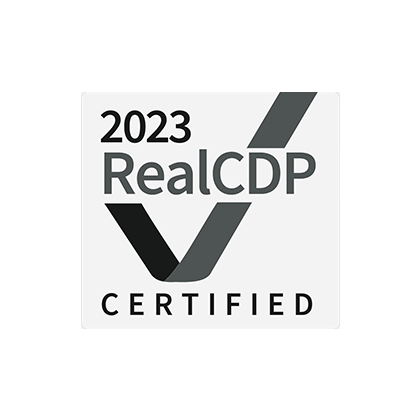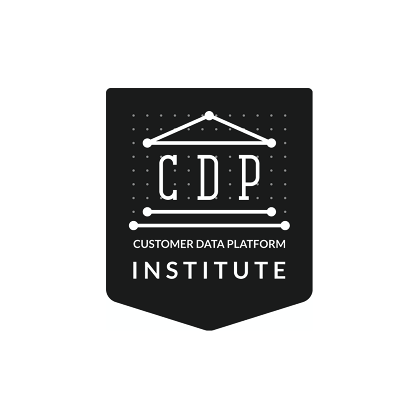The importance of first-party customer data in driving business success is clear. It’s also the fuel that powers the success of a Customer Data Platform, like Zeotap CDP. However, with all this boiling down to the customer data being correctly ingested into a CDP, it can be challenging to monitor and troubleshoot the status of customer records.
Fortunately, Zeotap CDP’s feature – Source Analytics – has got you covered, providing complete visibility into the data ingestion process and empowering you to take proactive, quick corrective measures based on real-time data.
Introducing Source Analytics
At Zeotap, our clients ingest millions of data records into our platform for profile unification, audience segmentation and campaign activation in marketing and advertising platforms. We know that a key challenge for marketers using a customer data solution is having complete visibility into the status of data ingested, such as visibility on total records ingested vs total records failed. This prompted the build and launch of Source Analytics.
Source Analytics gives you a complete view of your data ingestion lifecycle, right from when file is dropped, resolved and ingested. It provides you with:
- Complete visibility on data sources and customer records ingested into Zeotap CDP through intuitive graphs and charts
- Faster identification and resolution of ingestion-related issues
A screenshot of Zeotap CDP’s Source Analytics feature:
Understanding Source Analytics through user stories
Let’s take a closer look at some user stories to understand how Source Analytics can benefit different personas.
User story #1: Data source monitoring
Meet Jane, a data solutions architect who wants to understand the ingestion progress of her different data sources into Zeotap CDP. She navigates to the Source Report section of Zeotap CDP and clicks to view the graph. She can see the regular flow of data and also check the file-drop listing to track the drop schedule.
User story #2: Ingestion failure visibility
Now let’s meet John, a marketing manager who wants to perform identity resolution on an audience segment to transform unknown website visitors into known users. John drops the data file into Google Cloud Platform (GCP) and navigates to the Source Report section within Zeotap CDP to confirm if the file was received correctly. Unfortunately, the ingestion failed. John looks for the problem in the ingestion log and identifies an incorrect value in the date column, which does not match the format defined in the Catalogue (another key feature of ours and you can read about it here). John takes the necessary action to fix the error in the file, ensuring successful data ingestion. John confidently proceeds with creating an audience segment ready for identity resolution.
User story #3: New data availability in Zeotap CDP
Lastly, let’s look at Sandra, a data manager who wants to create an audience segment using a new field that she mapped to an existing source. She starts by dropping the sample file in GCP and maps the new field to a Catalogue field. To confirm that Zeotap has received the file, Sandra goes to the Source Report section of Zeotap CDP. Unfortunately, she discovers that the ingestion has failed due to the new user attribute data type not matching the expected data type of that attribute as defined by her. However, with the ingestion log available right there, Sandra can quickly understand the problem and apply a fix by performing the suggested steps. Once she resolves the errors, the file is available to create an audience segment.
In a Nutshell
Source Analytics is critical for managing, monitoring, and troubleshooting data ingestion issues – empowering you to make informed decisions based on real-time data. With its intuitive charts, you can quickly identify and resolve any ingestion-related issues, ensuring that you are always campaign ready with high-quality data at your finger tips.
If you’re interested in learning more about how Zeotap CDP’s Source Analytics feature can help you, you can request a demo here. We’d be happy to answer any questions you have.


































